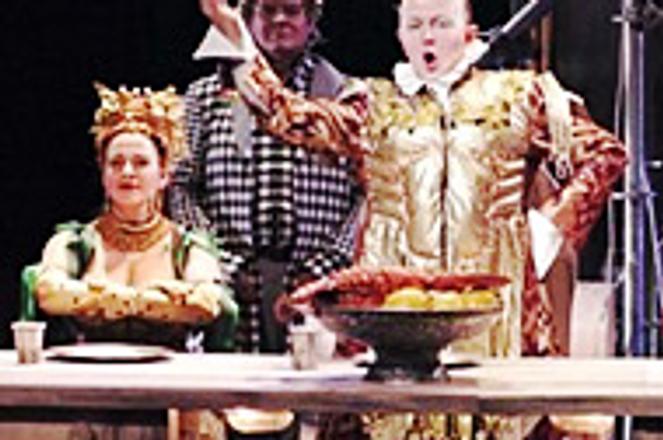AUTHENTIC staging of Händel's Agrippina reveals its magic.photo: Courtesy of the Royal Dutch Embassy
EVEN some music lovers find operas by Georg Friedrich Händel to be an acquired taste. Composed during the height of the Baroque period, many of them are full of long, florid da capo arias and plots about the battle between good and evil, which can make the style seem repetitive and more focused on form than emotion. But, if Händel's operas are staged authentically, with careful attention paid to the details in the score, and a deep understanding of the opera's specific historical significance, a rich and magical expressiveness is revealed.
Such are the views of Jan Willem de Vriend, violinist and conductor of the Combattimento Consort Amsterdam, which presented its interpretation of Händel's Agrippina at the Slovak National Theatre on the weekend of October 22.
The production of the opera, with international cast, was part of the Thinking Forward cultural programme organised by the Netherlands as part of its European Union presidency.
"Händel is often performed in a boring way," de Vriend said at a lecture held before the performances. "But in Agrippina there's love, political humour, psychology, and emotion is found in the score through the form Händel chose for each recitative, tempo change, and aria."
Set in first-century Rome, Agrippina is a black comedy about the seductive, power-hungry title character, who plots to have her son, Nero, replace her husband as emperor.
Based on true historical figures, its most famous scene involves the three main male characters arriving at the bedroom of Poppea, the courtesan they all long for. Poppea plays them off against each other, and hides them in different parts of her bedroom, so they can eavesdrop and plot, their jealousy raging. Many believe this comedic style laid the groundwork for opera buffa, later used in the works of Wolfgang Amadeus Mozart and Gioacchino Rossini.
Agrippina also serves an important role as a mixture of the two competing operatic styles at the time: French and Italian.
"French style," de Vriend explained, "required singers to face out to the audience, carry their arms elegantly above their waist, and keep their feet in ballet positions, because French opera was rooted in the ballet traditions of the Court of Louis XIV, which kept the focus on effect and beauty. The Italian style was less strict and focused on communicating feeling and emotion.
"Composed in Venice, Agrippina used the elegant gestures of the French style with the emotion of the Italian style. The characters gesture beautifully as they sing to each other, then turn aside and discreetly reveal their true feelings. These 'asides' developed the opera's psychological dimensions and made it more emotionally gripping and intriguing."
The production of the Combattimento Consort Amsterdam is currently touring central Europe and will culminate in the Netherlands.
For more information on the Combattimento Consort Amsterdam, visit www.combattimento-consort-amsterdam.nl.


